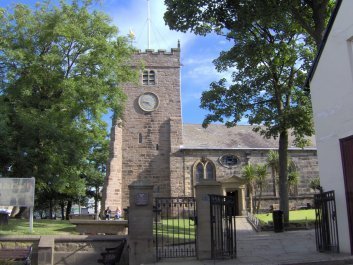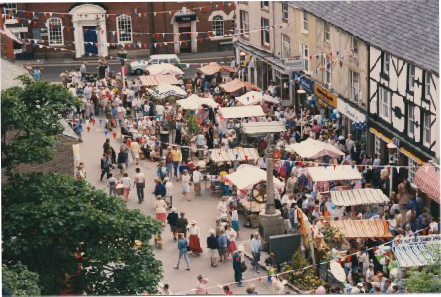
APRIL 2024
DOMESDAY
Lancashire did not exist as a county in 1086 and Poulton appears in the Yorkshire
section of the Domesday Survey, one of over 60 local villages in Amounderness. Unfortunately
no details are given about these communities. Domesday records 3 churches in Amounderness
but does not say where they were. However it is extremely likely that a church has
stood in Poulton since Anglo-
Poulton was part of a very large Anglo-

ROGER DE POITOU
The first written evidence for a church in Poulton is a document drawn up in 1094 when Roger de Poitou, the Norman knight to whom Amounderness had been granted after the Conquest, presented the church in Poulton to the Abbey at Sees in Normandy. It was accepted practice for this to be done, and Poulton church, together with other churches in Amounderness, including the newly built church dedicated to St Mary at Lancaster, remained in the hold of the Norman Abbey until Henry IV dissolved the power of foreign abbeys to hold land in England.
Until the early nineteenth century when the Victorians began a major programme of church building on the Fylde coast, the parish of St Chad, Poulton stretched from what is now Squires Gate Lane in Blackpool, where it met the parish of Lytham, to the banks of the River Wyre where Fleetwood now stands. (Over a period of about eight hundred years Bispham church was at different times both a chapel of ease to Poulton and a separate parish.)
Poulton has never belonged to a major landowner and so the township has no important and useful documents such as Manor Court Rolls. After the Reformation, Queen Elizabeth passed the church to members of the Fleetwood family, but the majority of landowners in Poulton continued to be local people owning small farms.
A MARKET TOWN
Built on one of the few low hills in the western part of the Fylde, near to the River
Wyre, for centuries Poulton provided a natural social and commercial centre for
the many tiny hamlets which lay over a wide area reaching from Lytham to Kirkham.
Over the centuries Poulton became an important market town providing local farmers
and families with the many services they needed -
This view from the top of St Chad’s church tower shows the Market Place with the Victorian Market held in June 1997.